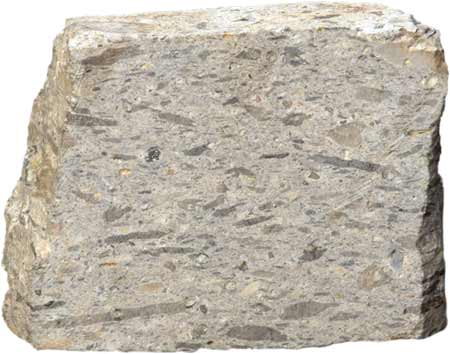Ignimbrite
Ignimbrite is a pumice-dominated pyroclastic flow deposit formed from the cooling of pyroclastic material ejected from an explosive volcanic eruption. As the pyroclastic material settles it can build up thick layers, and if the temperature is sufficiently high

ignimbrite (welded) |
Other specimens - Click the thumbnails to enlarge 

|
Colour - variable, typically light-coloured (e.g. pinkish-white, pale grey etc).
Texture - aphanitic if not welded, eutaxitic if welded.
Mineral content - pumice clasts in a fine grained glassy matrix, may contain lithic clasts and / or phenocrysts of varying composition.
Silica (SiO 2) content - NA.
Uses - building stone for decorative walls, paving etc.
New Zealand occurrences - widespread over the Bay of Plenty-Rotorua-Taupo area.

